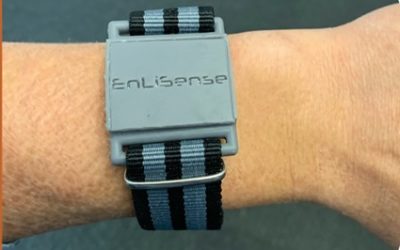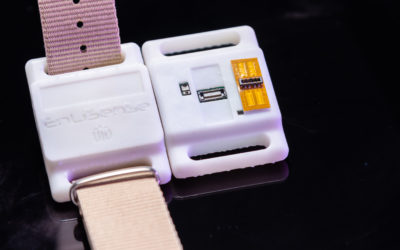The varying chemical composition of sweat has been used by scientists for different analyses from an athlete’s performance measure to detecting a chronic disease. But this translation of raw sweat into real-time analysis is not an easy everyday task.
There are a lot of limiting factors in sweat analysis such as climatic conditions in which there is not enough generation of sweat that can be analyzed or some hereditary problem in which the person isn’t able to produce a lot of sweat. All these problems can be challenging to deal with in the study of everyday sweat response. One way is by measuring the cortisol level which is a widely accepted principle in gauging the amount of physiological and cognitive stress someone is experiencing at a particular time but it is a difficult procedure to follow outside of controlled conditions.

To overcome the shortcomings, a technology developed by Dallas-based EnLiSense LLC and the University of Texas at Dallas, works by reading a person’s glucose and cortisol levels together using sweat sensors. The patch, which is just 120 square millimeters can detect biomarkers in sweat volume as low as 1 to 3 microliters. The technology seems promising enough that the U.S government’s Biomedical Advanced Research and Development Authority (BARDA) featured it in its July 2021 innovations highlights.
Sriram Muthukumar, CEO and co-founder of EnLiSense explained how the technology is different to continuous glucose monitoring (CGM) as CGM works by analyzing changes in interstitial fluid surrounding the body’s cells and don’t measure the blood glucose levels directly. “They use a microneedle that penetrates the skin and uses capillary action to harvest interstitial fluid around the vein,” Muthukumar says. “So if the value of the blood glucose is x, the value of the interstitial fluid will be y…The CGMs use the changes in y to say whether you are in a green zone or not, like driving in a lane. Are you steering too far right or left, are you getting into a hypo- or hyperglycemic state?”

The EnLiSense sensor uses an application of Faraday’s law of induction that harnesses electrical measurements to infer chemical properties of a system called electrochemical impedance spectroscopy. The sensor can be worn as a watch-like strap and is able to contain detection strips for more than one target at a time and doesn’t use a microneedle which can cause discomfort like used in CGM.
The EnLiSense has already been successfully tested in simultaneous detection of cortisol and glucose in an everyday workday scenario on 10 subjects and could even be used for treatments for obesity in the future.


